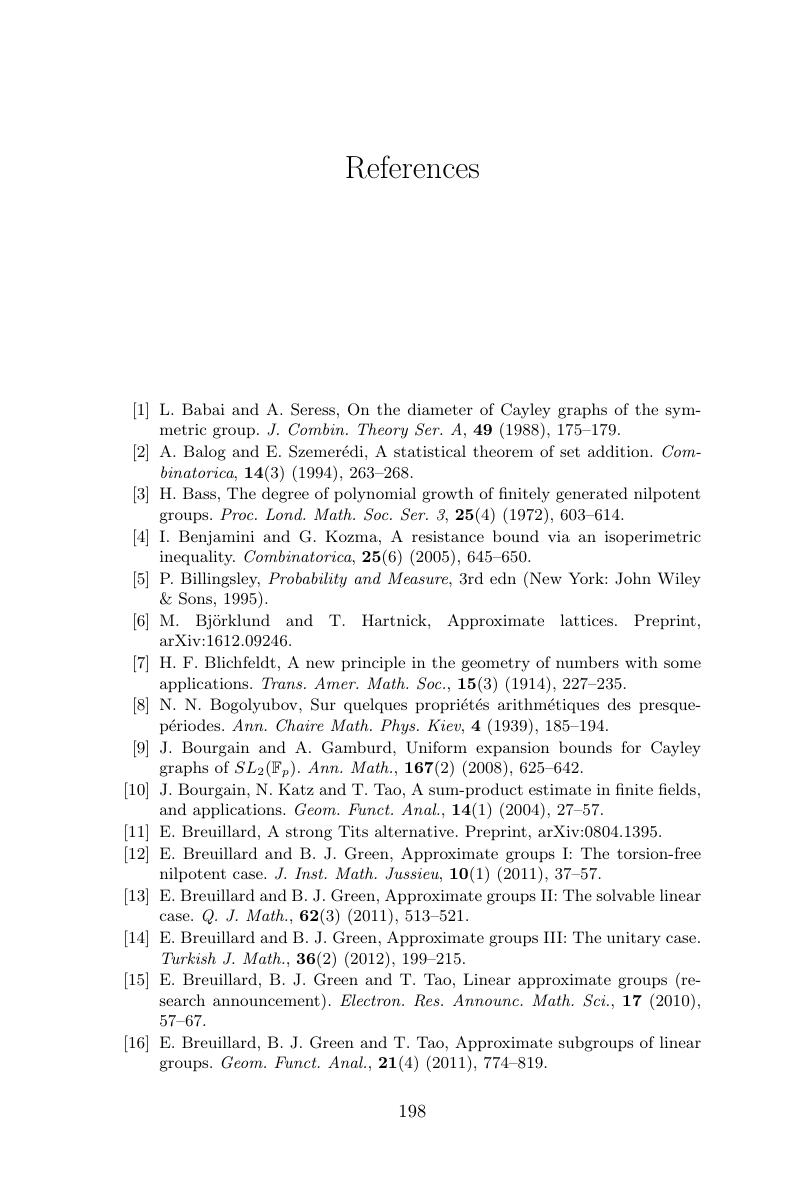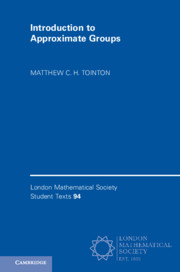Book contents
- Frontmatter
- Dedication
- Contents
- Preface
- 1 Introduction
- 2 Basic Concepts
- 3 Coset Progressions and Bohr Sets
- 4 Small Doubling in Abelian Groups
- 5 Nilpotent Groups, Commutators and Nilprogressions
- 6 Nilpotent Approximate Groups
- 7 Arbitrary Approximate Groups
- 8 Residually Nilpotent Approximate Groups
- 9 Soluble Approximate Subgroups of GLn(C)
- 10 Arbitrary Approximate Subgroups of GLn(C)
- 11 Applications to Growth in Groups
- References
- Index
- References
References
Published online by Cambridge University Press: 31 October 2019
- Frontmatter
- Dedication
- Contents
- Preface
- 1 Introduction
- 2 Basic Concepts
- 3 Coset Progressions and Bohr Sets
- 4 Small Doubling in Abelian Groups
- 5 Nilpotent Groups, Commutators and Nilprogressions
- 6 Nilpotent Approximate Groups
- 7 Arbitrary Approximate Groups
- 8 Residually Nilpotent Approximate Groups
- 9 Soluble Approximate Subgroups of GLn(C)
- 10 Arbitrary Approximate Subgroups of GLn(C)
- 11 Applications to Growth in Groups
- References
- Index
- References
Summary

- Type
- Chapter
- Information
- Introduction to Approximate Groups , pp. 198 - 201Publisher: Cambridge University PressPrint publication year: 2019



